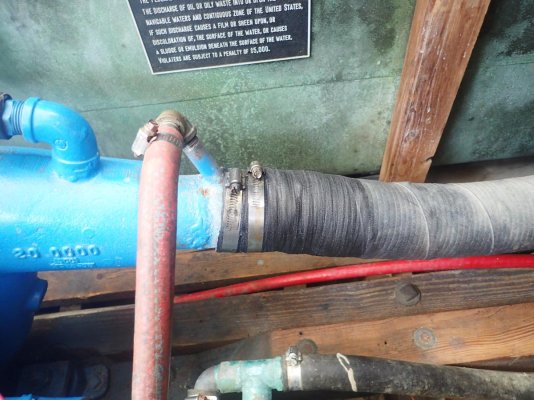I use Rectorseal T plus 2.
It prevents the hoses from adhering onto the the metal pipes. And they do not leak or fall off. I like that it is non hardening. You don't want to make it even harder to take off hoses than it already is.
RectorSeal® T Plus 2® pipe thread sealant is a non-setting, multi-purpose compound which contains PTFE, plus synthetic fibers to create a stronger seal. Recommended for use on threaded galvanized steel, iron, brass, copper, aluminum, stainless steel, polyethylene, fiberglass reinforced, PVC, CPVC, and ABS pipe. T Plus 2 may be pressurized immediately following application. Conforms to TT-S-1732.
RectorSeal® No. 5® pipe thread sealant is a soft-set, slow drying compound which seals, lubricates, and protects threaded pipe and fittings. It can be pressurized immediately for piping up through 2″ and 100 psi(for natural gas, air and water only) and is ideal for application with a wide variety of fluids and gases, including potable water applications.


